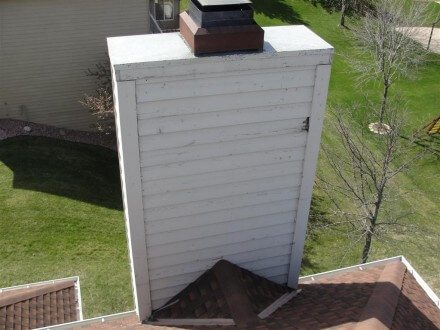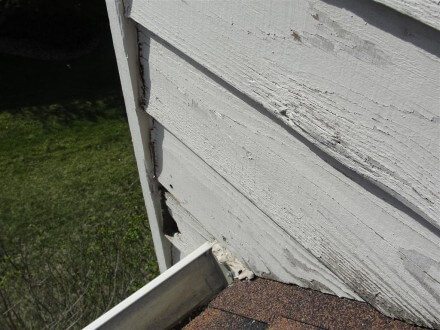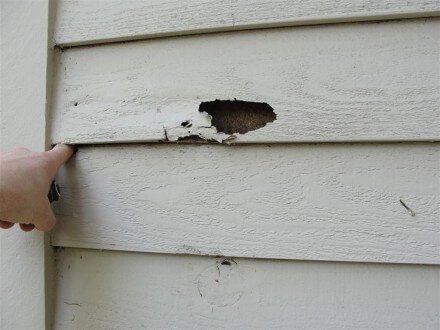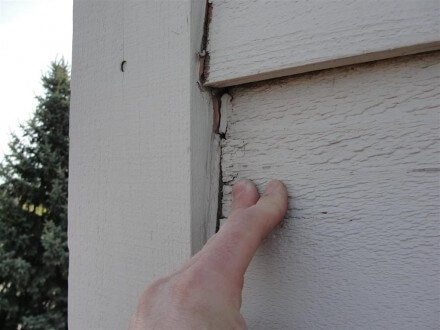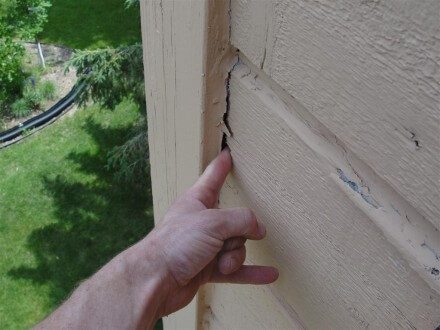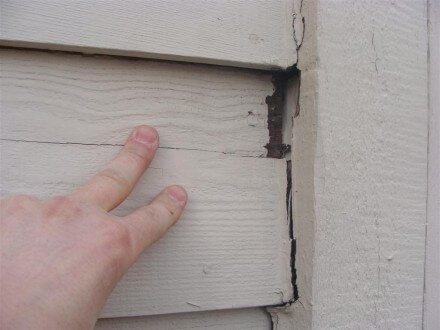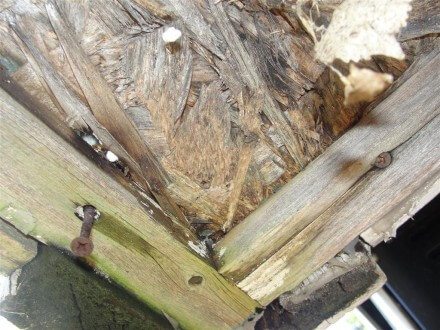If your home has a wood chimney chase with wood lap siding, you need to pay special attention to it. There are a disproportionate number of wood chimneys with rotted siding and wall sheathing, when compared to other types of siding and other locations. I regularly inspect houses with wood chimney chases that have major water damage inside the walls, but in most cases there is little, if any, visible evidence of the damage.
To check for water damage at wood chimneys, you can usually just go around and push on the wood siding at the outside corners, where the siding ends at the wood trim pieces. If the siding ‘gives’ or your finger goes through, you know you have a problem. When rotted siding is found at a wood chimney chase, the next step is to have some of the rotted siding removed to have the wall sheathing below the siding inspected for water damage.
The photos below show a few rotted chimneys I’ve come across in the past few months.
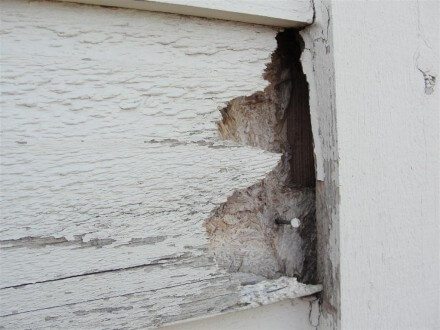
Besides just checking the chimney walls, it’s a good idea to check underneath the chimney when possible. This will usually be the area that looks the worst.
Why all the rot? Wood chimney chases are especially susceptible to water intrusion and rotting because they’re not protected by any type of soffit or overhang; no matter which way the wind is blowing, chimneys are subjected to a lot of water when it rains. There is also something in common with all of the photos shown above; did you see what was dried out and split at every one of these chimneys? Caulk.
Preventing rot at your wood chimney walls is mostly about maintenance. Wood lap siding needs to be caulked where the siding pieces end at the outside corners. When the siding isn’t properly caulked and sealed, the end grains of the wood suck up moisture and eventually cause the wood to rot. Even small gaps between the siding and trim can equate to major water intrusion and water damage.
It’s all about an ounce of prevention.
Reuben Saltzman, Structure Tech Home Inspections

